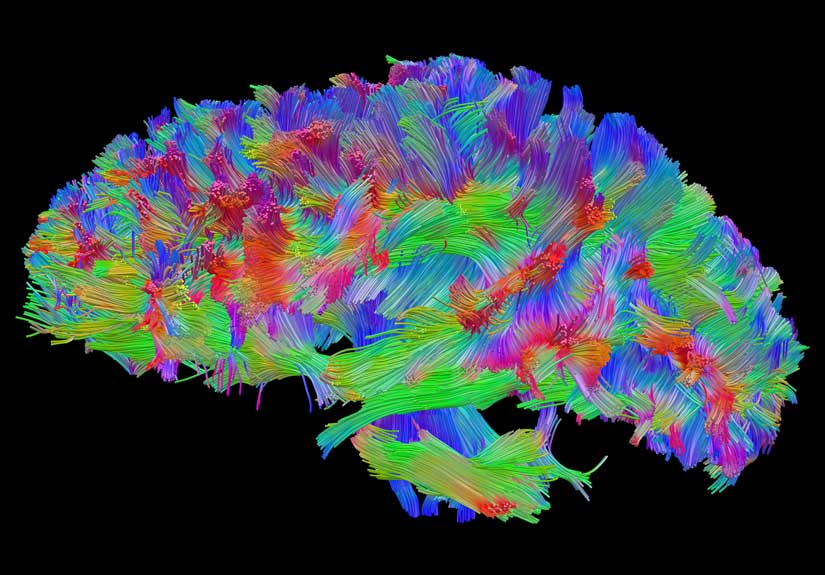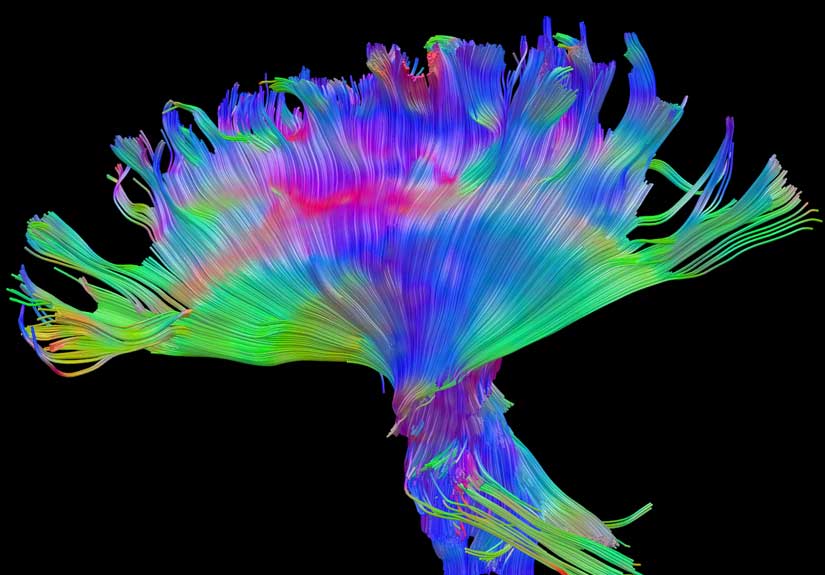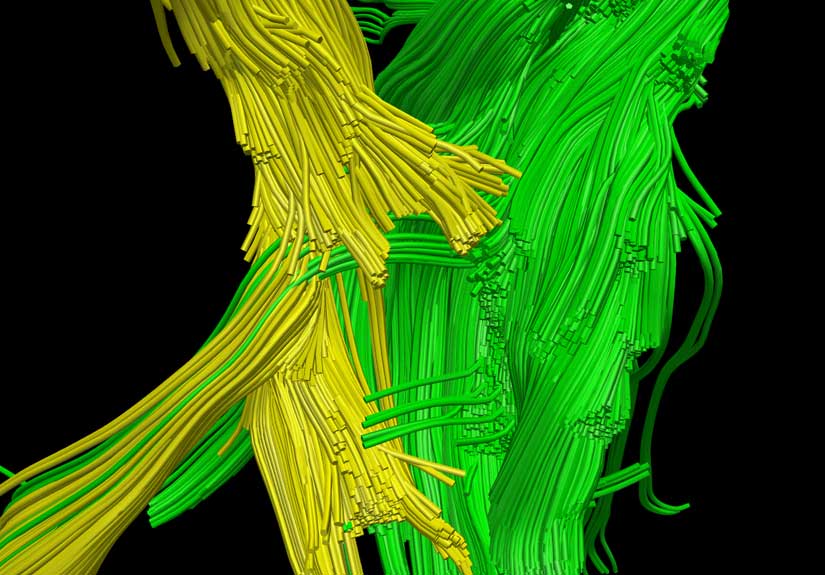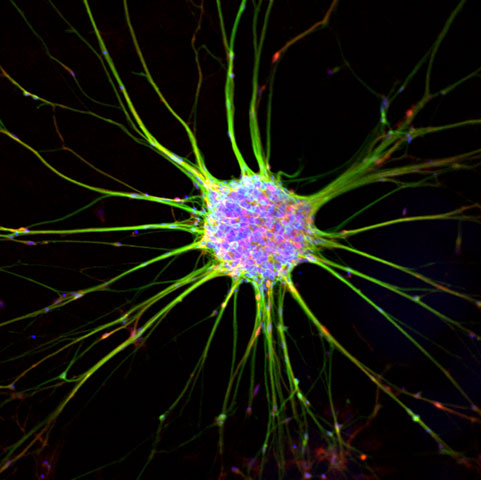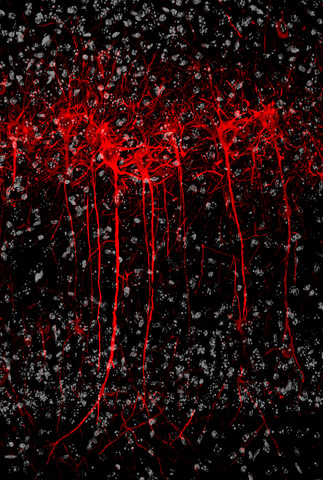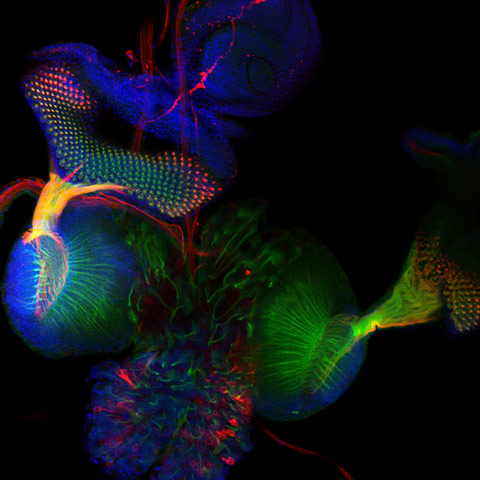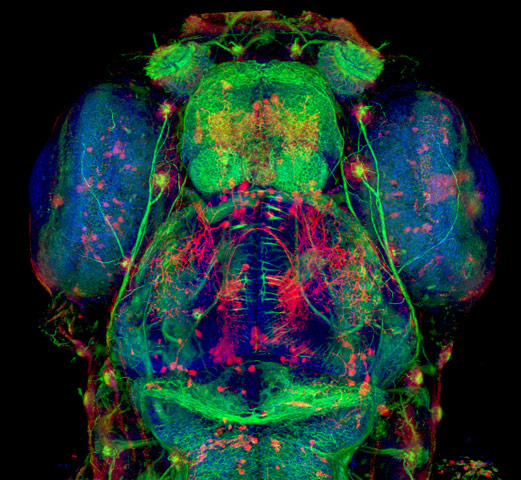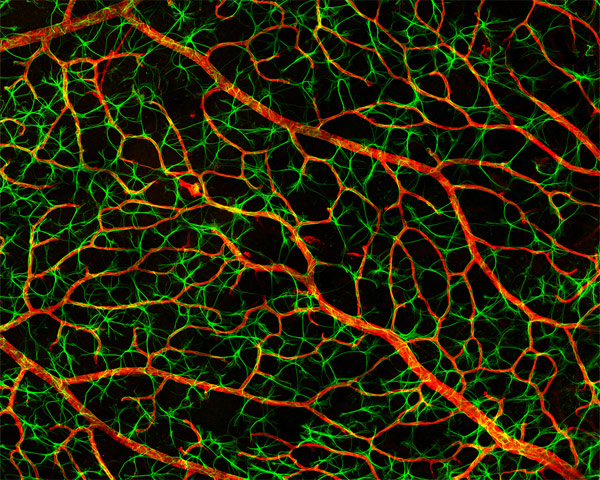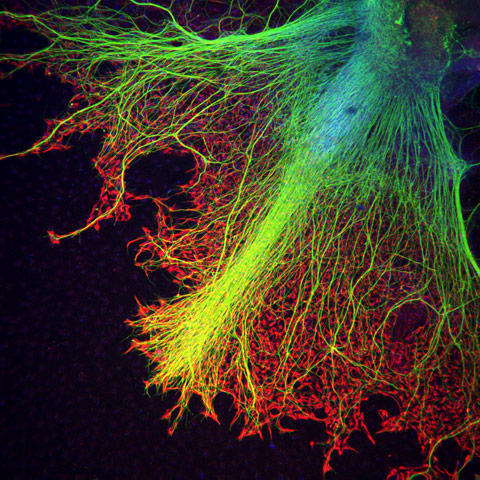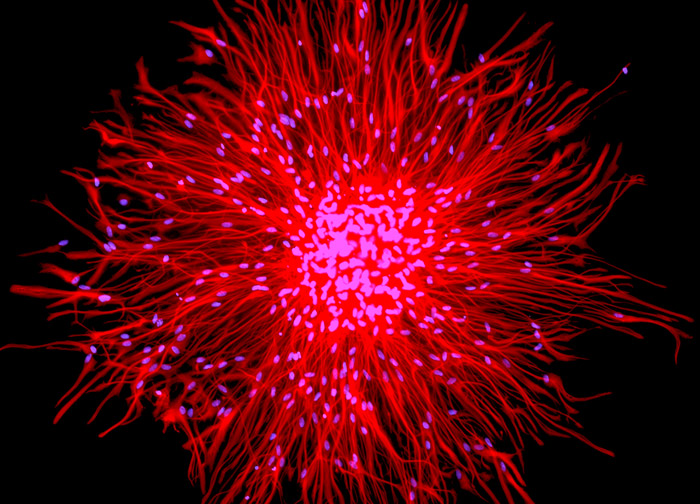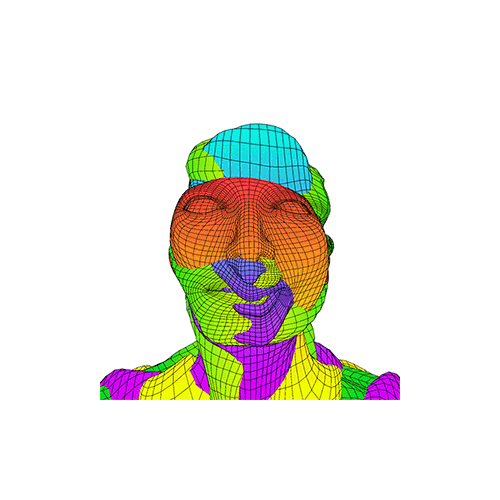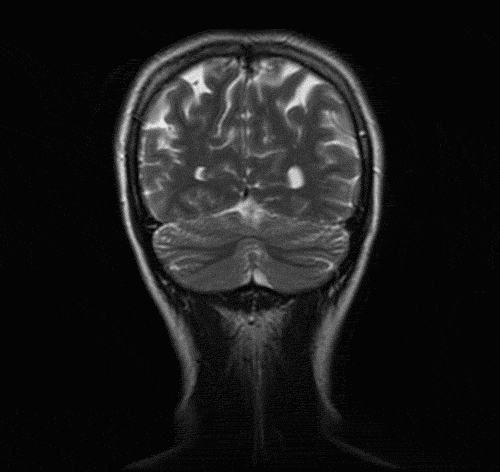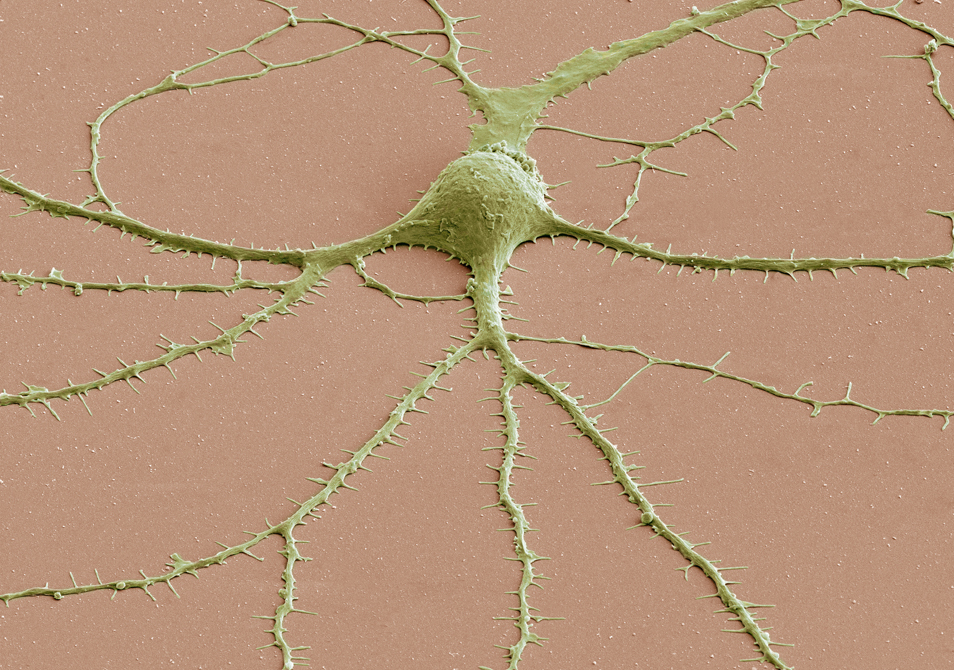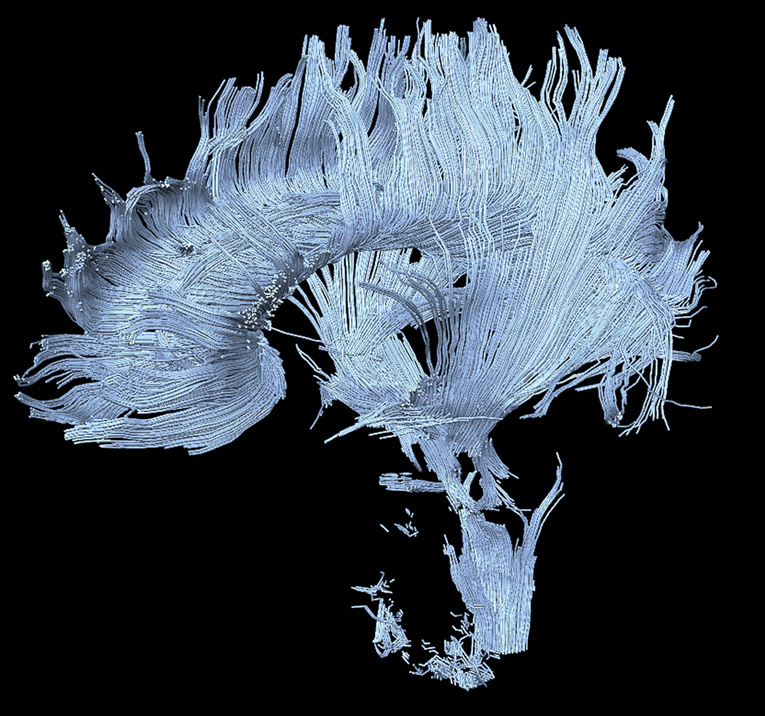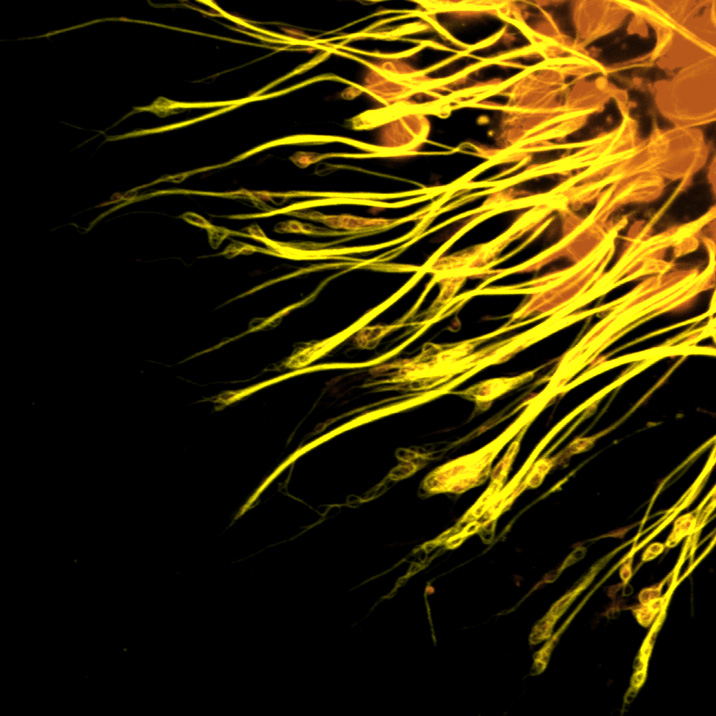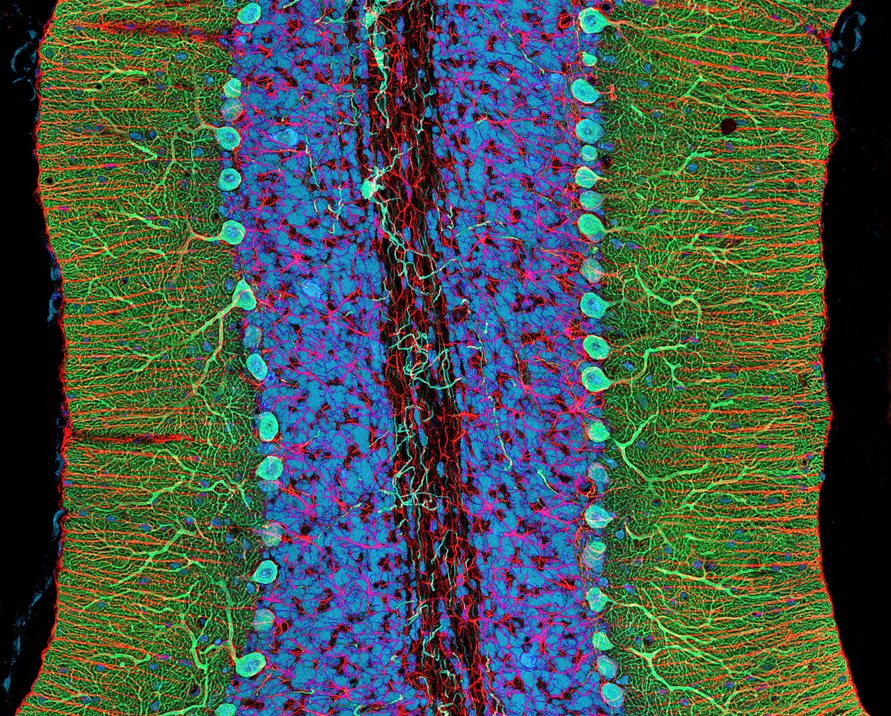High-definition fiber-tracking map shows a million brain fibers in an uninjured brain.
High Definition Brain Injuries
Unfortunately, injuries to the brain can be incredibly difficult to diagnose and treat. The nervous system is complex – there are 150,000-180,000 km of myelinated fibers in the brain alone! However, new high-definition brain imaging (shown above) from a team of radiologists, pychiatrists, and neurosurgeons from the University of Pittsburgh will allow doctors to more easily diagnose and treat these illnesses.
Brain fibers from a patient hurt in an ATV accident – nerve fibers shown intact
Here is an excerpt from Walter Schneider, a psychologist on the team that created the technology in a discussion with Discovery News:
Tracing brain damage is like trying to follow a truck on a highway from a helicopter and losing sight of it every time it encounters an intersection. But the new images can pick out the tracks and show how much function is lost after an injury.
The images are captured using a magnetic resonance imager. By taking many scans and applying a new mathematical model, one can see the actual neural tracks. Ordinary MRI scans are taken from only 51 directions, but the new kind of scanning does it from four times that number.
“This helps answer the question, how big of a hit did you take?” Schneider said. He likened it to an X-ray machine for bone injuries.
High Definition Brain Injuries – Uninjured shown in green, injured in yellow.
High definition Brain Injuries – Fiber tracking reveals injury in yellow, healthy fibers in green.
While the implications of this new technology are not completely clear, there is hope that it can eventually help diagnose and potentially treat a wide range of brain injuries — PTSD, concussion, brain tumors, and even autism.
The images themselves are pretty amazing even without the context.
-RSB
[via Discovery News & images from Walt Schneider Laboratory]

